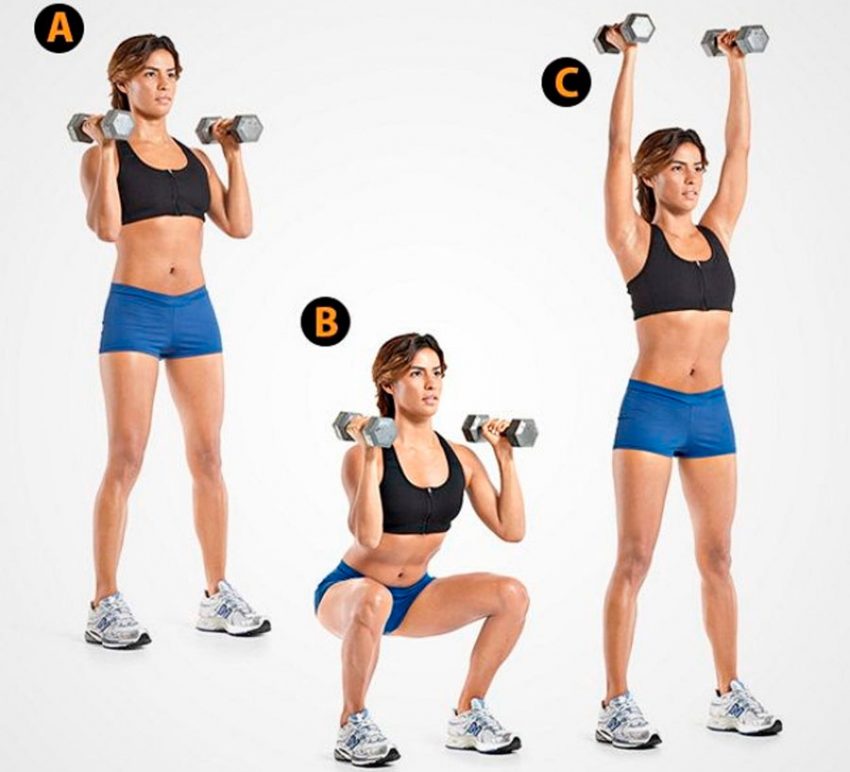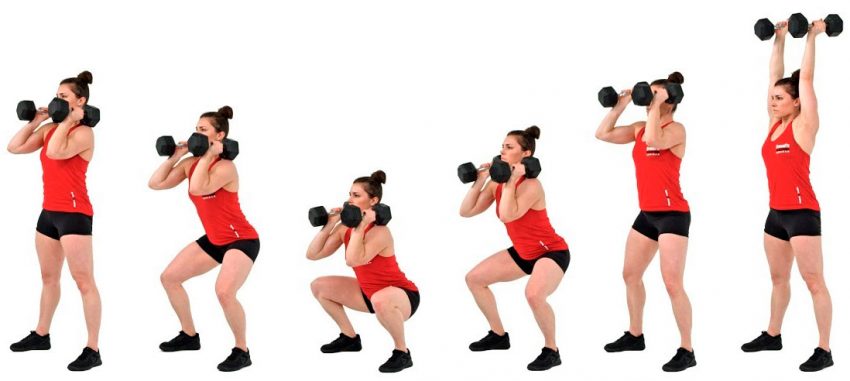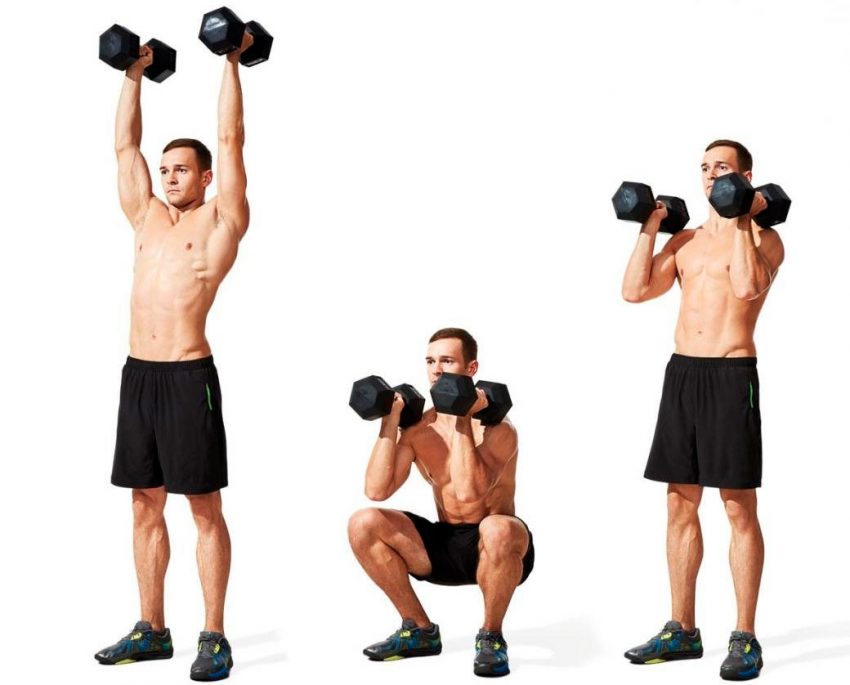Dumbbell trasters are a simpler version of the barbell exercise of the same name. They do not require significant flexibility and mobility in the shoulder joint, and allow even a beginner to perform the exercise. The movement is available for minimalist gyms and is designed not only to work out the muscles of the whole body, but also to generate a significant metabolic response. Simply put, exercise burns fat. How to do dumbbell thrusters correctly?
Features of dumbbell thrusters

The main feature is the basic nature of the exercise. Despite the relatively low weight of the dumbbells, most of the muscles in the body will be involved in the work. This allows everyone to get a high-quality study, even beginners who cannot yet perform thrusters with a barbell of significant weight.
The exercise develops balance, and helps to develop both the skill of distributing body weight in the foot, and the skills of maintaining the correct position of the back. It is useful for those learning barbell squats and weightlifting movements.
Trasters with dumbbells do not require great mobility in the hands; for their implementation, it is enough to choose the right weight of the projectile. If your wrists do not allow you to hold the dumbbells upright, you can always hold them using the bar parallel technique.
Execution technique

Initial position
- Take dumbbells in your hands, stand up straight. Due to the effort of the leg muscles (squat and extension in the knee joint), lift the dumbbells to the shoulders;
- Place your feet under your pelvic bones, spread your toes to the sides, and tighten your abs. The body must be stable so that when squatting, there is no forward tilt of the body.
Traffic
- Begin to spread your knees to the sides and lower yourself into a squat. Dumbbells are at the shoulders, arms are bent at the elbows;
- Extending at the knee and hip joint, at the same time gently squeeze the dumbbells up;
- At the top, you hold the dumbbells in your hands, and stand with your knees fully extended;
- Descending into the squat again, bend your arms at the elbow joints again, at the lowest point of the sitting dumbbells again at the shoulders;
- Repeat the required number of times to complete the approach.
Common mistakes

- The body falls forward, and the weight of the body goes to the toes . In this case, the dumbbells can be wound up behind the head in a compensatory way, or brought forward. Both options are quite traumatic and fraught with falling, especially if the athlete performs the exercise at a fast pace;
- Knees fall inward . This is fraught with injuries to the knee and ankle joints. And a problem arises when a person cannot stand up so that the weight is evenly distributed over the feet. Here it is recommended to do more regular classic squats, including without weight. This will help to understand both the placement of the feet and the correct angle of inclination of the body;
- There is a “pelvic peck” . There is an opinion that the peck is due to sinking too deep into the squat, but in fact it is associated with insufficient movement in the knees, and relaxation of the center of the body. When holding the dumbbells frontally, a dive means that the press does not work at all. Therefore, it is worth paying attention to the work of the press;
- Hands do not press the dumbbells up, but throw them forward or too far back . The range of motion of the dumbbells should be the same as in the classic standing press, that is, the dumbbells move behind the head.
Dumbbell trasters in the training plan

- Dumbbell trasters can be included in crossfit training complexes of the day, then they should be performed with no more than a third of your body weight if you are a beginner;
- In fitness-oriented training, they can be an “easy” option for pumping legs and shoulders, and turn on accordingly on the day when these muscle groups are worked out;
- The number of repetitions varies from 6 to 12 or more, but ideally a medium repetition mode is used. Multiple repetitions in thrusters are fraught with problems with joints and ligaments;
- Exercise can be performed in Tabata mode or cyclically (30 seconds under load, one minute of rest) in order to burn fat. In this case, the movement is placed at the very end of the workout as a finisher.
Dumbbell trasters are a versatile exercise that can be used both as a strength exercise and as a way to burn some extra calories. Movement strengthens all muscle groups, allows you to get rid of the effects of physical inactivity and contributes to harmonious development. Dumbbell trasters are good both as an element of complexes in CrossFit and as one of the exercises for the legs and shoulders.
